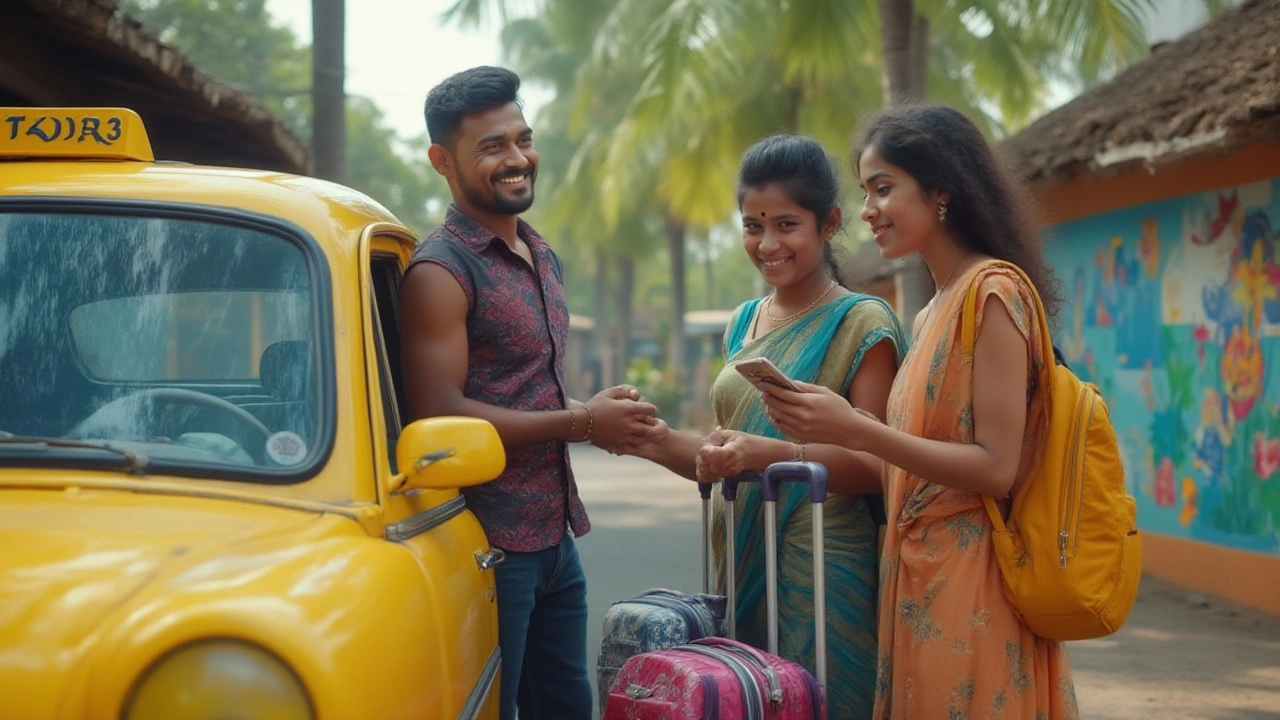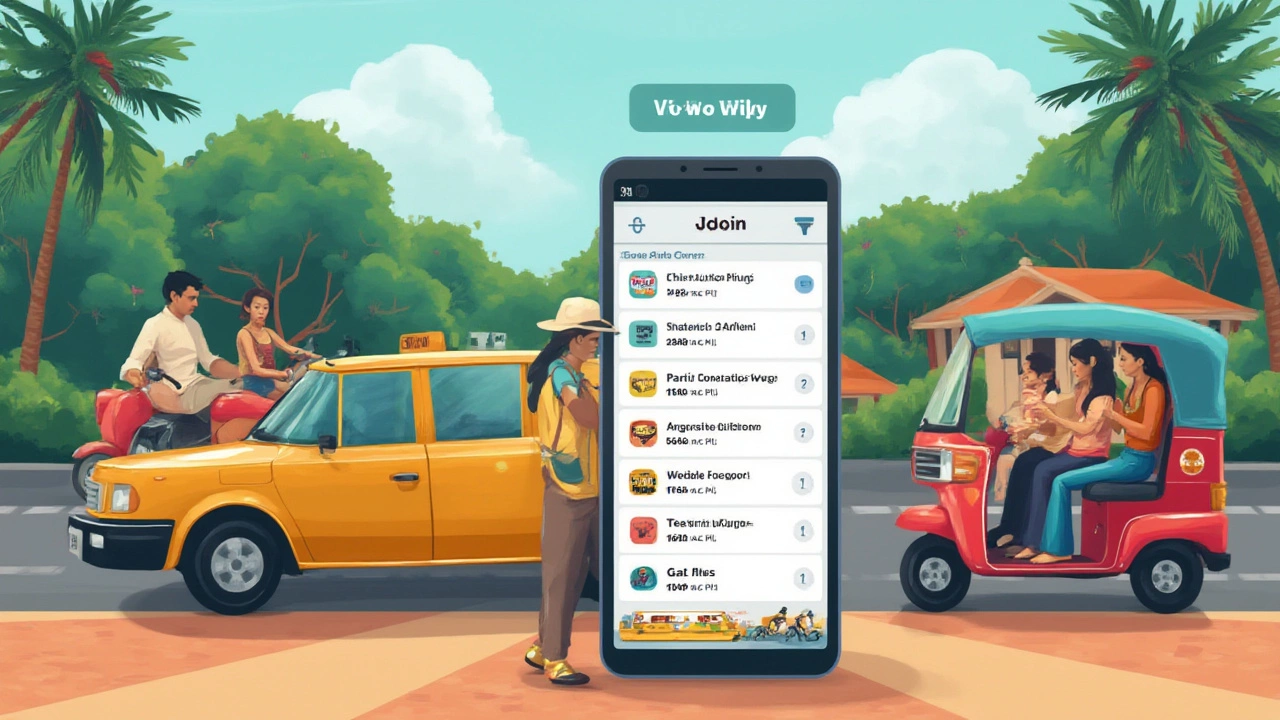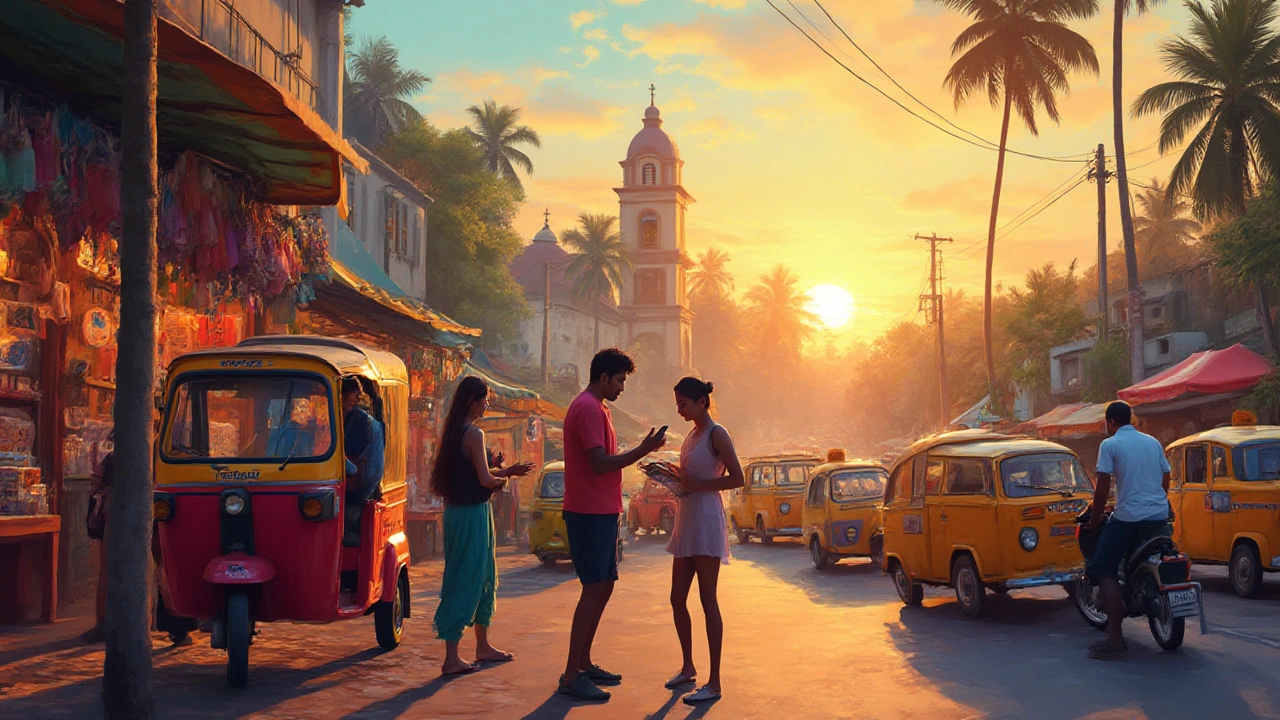Picture this: you’re standing outside Goa’s Dabolim Airport, the sun’s blazing, you have your bags, and you whip out your phone to order an Uber. Easy, right? If you’re expecting that familiar 'Your driver is arriving in five minutes,' you’re probably in for a surprise. Goa—sun, beaches, legendary nightlife—is a different beast when it comes to cabs and ride apps. The question is simple but shakes up travel plans for thousands every season: does Uber actually work in Goa right now?
Can You Really Use Uber in Goa?
Anyone visiting Goa in 2025 will notice something odd: there’s no sign of Uber on the streets. Try opening the Uber app anywhere near Panaji or Candolim or even the wilder parts of Palolem, and all you usually get is a big 'unavailable' message. There’s a reason for this. Back in 2016, Uber flirted briefly with operating in Goa, but it didn’t last. Fierce competition from Goa’s powerful local taxi associations led to a shutdown of the service by 2017. Uber, and rival Ola, just couldn’t break through the system set up by traditional cab unions. Local unions have had plenty of sway with authorities, arguing that big ride-hailing apps threaten their livelihood—especially with Goa’s huge reliance on tourism dollars. That’s played a massive part in keeping Uber and Ola out of the state ever since.
Sure, you might spot the Uber logo in the app or find it listed on a search website, but try actually calling a cab: nothing happens. It’s not a glitch. It’s policy. Even Ola, which stirs up more hope some seasons, is not active in Goa in 2025. That’s the reality. It means all that tech convenience you get in major cities simply does not exist here. For tourists used to zipping around India’s metros on their phones, this feels like a throwback to a different era—which, in a place famous for sunsets and old-school parties, almost fits. Still, it pays to know this ahead of time, or you’ll spend your first hour staring at your phone, getting absolutely nowhere.
Uber in Goa may not work, but people still have to get around. Everyone loves the idea of hitting the perfect beach, then moving onto the perfect shack, then onto the perfect club without a headache about transport. Here’s where some creativity—and local knowledge—makes a difference.

How Locals and Tourists Actually Get Around Goa
Goans are nothing if not resourceful. The Uber ban didn’t make getting around impossible; it just forced a shift. Old-school taxis are at every transport hub, hotel, and busy beach. You’ll find them outside the airport, railway stations, major restaurants, and even lurking near popular tourist sites. It’s classic: you negotiate a fare, usually in cash, and hope the price makes sense. No meters, no app-based fare, no digital receipts—the experience is much more DIY than you might expect in 2025.
One interesting twist? Local taxi drivers have launched their own app-based services. The most popular in 2025 are GoaMiles and ROKO cabs. GoaMiles is officially backed by Goa’s government. The app feels pretty familiar if you’ve ever used Uber: you book a cab, the fare is shown, you pay online or in cash, and a local taxi picks you up. But there’s a catch—there’s a limited fleet, and during peak seasons or busy weekends, wait times can stretch far longer than an impatient party-goer or sunburnt tourist wants. Sometimes, the prices spike, especially around New Year’s Eve or the big music festivals (Sunburn and Supersonic, anyone?).
ROKO is another option. It’s newer, less polished, and aimed more at local commutes, but worth a try if you’re out of options. There are also app-based bike taxis—the most known is BLive, which is great for solo travelers or anyone avoiding traffic jams. The state, weirdly, still resists autos (tuk-tuks), which are everywhere else in India, and doesn’t allow ride-sharing in the 'pooling' sense either.
If you really want independence (and cheap rides), scooters and motorbikes are the way to go. Rental joints line roads near every beach town. Prices range from ₹350 to ₹500 per day for a standard scooter. Think full tank, sun on your face, exploring hidden gems at your own speed. For cars, daily rentals start at around ₹1,200 onwards. But, be smart: traffic police expect you to have a valid license, helmet, and—ideally—a sense of Goa’s somewhat unpredictable road logic. Some rental agencies will try to keep your passport as a deposit, but don’t do it—carry a copy and leave a refundable cash deposit instead.
Buses are an option but are usually crowded and stick to main roads. Buses don’t reach every beach, and if you’re loaded down with luggage after a flight, it’s just not practical. Still, if you’re feeling adventurous and want to mix with locals, it’s cheap (almost always below ₹50 per ride) and colorful: blast Bollywood radio, coconut sellers hopping on and off, the whole works.
For short distances, plenty of travelers walk or cycle. Many hotels and hostels offer bicycle rentals. Some even organize daily cycling tours—morning spins through paddy fields or sunset routes along the coast. But, yeah, mid-afternoon sun in May? It’s as intense as a Goan vindaloo, so plan accordingly.
Want something fancy or private? Pre-booked chauffeur cars, limousines, and classic retro taxis (think Ambassador or white vintage cars) are available, mostly at four-star and five-star hotels. These aren’t cheap, but they make for unforgettable Instagram shots—and a break from haggling on the street.

What You Should Know Before You Go
Now, let’s get practical. Goa’s travel scene feels different if you plan a little, especially around cabs and apps:
- Airport Transfers: Official pre-paid taxi booths run at Dabolim Airport, and these cabs, though costlier than city taxis, save you the endless negotiation step after a long flight.
- Payment: Most local taxis and app rides (GoaMiles) prefer cash, though digital payments via Google Pay or Paytm are becoming more common if you ask up front.
- Peak Season Craziness: From late December to early January, and during all major music festivals, cab rates can double or even triple. Pre-booking is king.
- No Surge Pricing: Normal street taxis don’t surge, but GoaMiles can, which sometimes makes old-school haggling actually cheaper.
- Language: Most drivers speak enough English, but sometimes basic Hindi or even a few words of Konkani helps if you’re negotiating fares or asking for a quick detour.
- Ride-Sharing Pool Option: Not available anywhere in Goa, even on GoaMiles. Every cab is essentially private, whether solo or with friends.
- Late-Night Transport: Taxis may disappear from the roads after midnight, especially in North Goa away from the main tourist hubs. It’s smart to arrange your return journey in advance if you’re planning a late night out.
- Scams: Watch out for 'broken meter' excuses (even though most don’t have meters) or inflated tourist prices offered at busy beaches. Always check the rate chart, ask hotel staff for typical fare advice, or use GoaMiles to compare offers.
- Bike Rentals: Inspect your rented scooter, take photos of any dents, and never ride without a helmet. Police checks are common, and fines sting.
- ID Documents: Keep your passport and license on you, or at least have a digital photocopy handy for any road checks.
Just so you know you’re not alone, here’s how travelers rated different transport options in Goa (2024 travel survey of 1,000 tourists):
| Mode | Average Cost Per Km (₹) | User Rating (out of 5) | Availability |
|---|---|---|---|
| Street Taxi | 28 | 3.2 | Medium-High |
| GoaMiles App | 32 | 3.8 | Medium |
| Bike Rental | 6 | 4.5 | Everywhere |
| Bus | 2 | 3.9 | Limited, Main Roads |
| Pre-Booked Car | 55+ | 4.3 | On Request |
That user rating for bikes? Unsurprising. The freedom factor is unbeatable. Of course, rainy season (June-September) can throw a wrench in those plans—rains can be wild, and roads slick. During that time, taxis get busier and, yes, more expensive. Check the tires and brakes before riding, or just use cabs.
Some visitors also arrange local drivers for their entire stay. It’s more expensive (₹2,500 per day upward for a car with driver) but takes the stress out of every ride. You can negotiate directly with hotel travel desks or pre-arrange through travel websites that specialize in Goa.
There’s no Uber in Goa, at least not in the way the rest of the world knows it in July 2025. You can still get around, party, explore, and chase sunsets; you just need to do it a bit differently, with a bit more old-school savvy, and a smartphone loaded with the right apps for local cabs. And maybe a scooter helmet for good luck.
